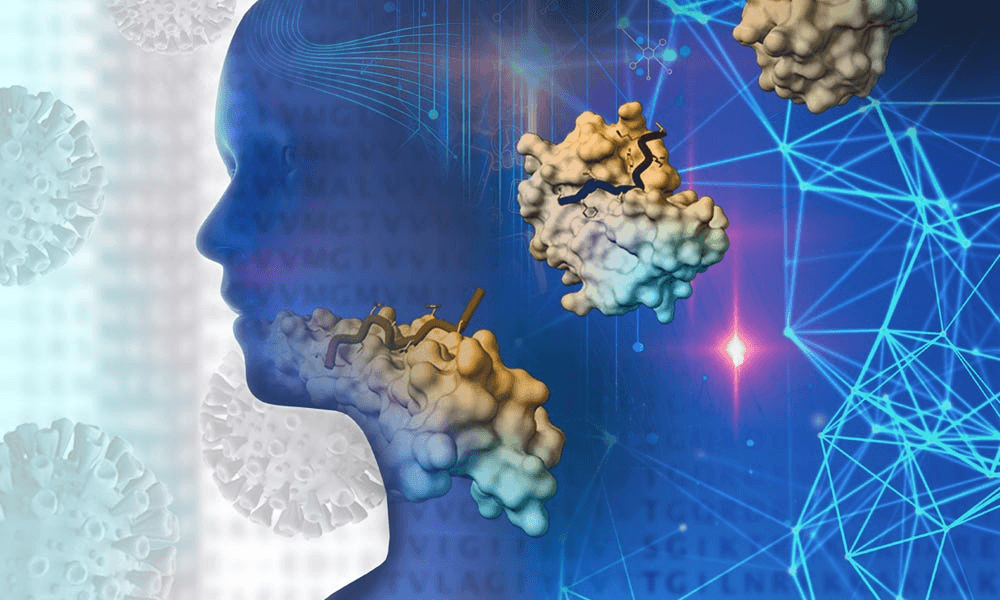 The soft luminescence of a personal device casts a gentle glow on a young face, the user navigating an endless scroll of digital interactions. Each tap and swipe offered a fleeting sense of connection, yet a persistent feeling of detachment lingered. Outside, the urban landscape pulsed with activity, but inside a quiet isolation prevailed. This individual was rarely alone; group chats thrived with constant communication, and social media offered a continuous stream of information and updates. Nevertheless, a subtle unease, a sense of not truly belonging was often experienced.
The soft luminescence of a personal device casts a gentle glow on a young face, the user navigating an endless scroll of digital interactions. Each tap and swipe offered a fleeting sense of connection, yet a persistent feeling of detachment lingered. Outside, the urban landscape pulsed with activity, but inside a quiet isolation prevailed. This individual was rarely alone; group chats thrived with constant communication, and social media offered a continuous stream of information and updates. Nevertheless, a subtle unease, a sense of not truly belonging was often experienced.
This paradox is increasingly common among Gen Z and younger Millennials, who report historically high levels of loneliness despite constant digital engagement. A concerning trend of a significant correlation between heightened digital engagement and increasing rates of anxiety and depressive symptoms among young adults in diverse global contexts has been observed. Loneliness today is less about physical isolation and more about a perceived gap between desired and actual social connections, raising the question: how did technology built to unite leave us feeling so lonely?
Understanding the Modern Loneliness Epidemic
The modern experience of loneliness arises from the influence of significant shifts in our social and cultural landscape over the past two decades. Structural changes, such as the rise of nuclear families and increased urban migration, often weaken the bonds of extended family and traditional community networks. Young individuals, pursuing education and careers, frequently find themselves geographically separated from established support systems. Compounding this is the intense pressure to succeed academically and professionally, particularly pronounced in competitive environments like India, which often leaves little room for cultivating meaningful social connections, as success takes precedence.
Adding to this complex web is the "illusion of connection" fostered by social media. While these platforms promise constant connectivity, they often present a curated and superficial view of reality. The carefully constructed highlight reels we encounter online can create a false sense of intimacy, lacking the genuine vulnerability essential for deep connection.
In the Indian context, these global trends are often amplified by specific cultural nuances. A tendency towards emotional suppression, where individuals are discouraged from expressing difficult feelings, coupled with a significant stigma surrounding vulnerability and seeking mental health support, can exacerbate feelings of isolation. The immense pressure to conform and achieve can make acknowledging loneliness feel like a personal failing, further deepening the experience of disconnection.
The Role of Social Media in Psychological Isolation
While digital platforms offer variable ways to connect, they can also inadvertently contribute to feelings of psychological isolation through several mechanisms. Likes, comments, and notifications stimulate the brain’s reward system, particularly the mesolimbic dopamine pathway, reinforcing our drive for digital validation. This creates a dopamine loop, driving us to constantly seek fleeting digital validation that often lacks the substance of real-world connection. Furthermore, we can develop one-sided parasocial relationships with online personalities, fostering a deceptive sense of belonging without the give-and-take of genuine friendship.
Social media also cultivates a culture of constant comparison, particularly concerning body image, lifestyle, and achievements, fuelling envy and the Fear of Missing Out. This comparison can undermine self-esteem and foster feelings of inadequacy and exclusion. Algorithmic systems exacerbate this issue by creating echo chambers, where individuals are primarily exposed to content aligning with their existing views, potentially leading to detachment from diverse perspectives and the nuances of real life.
The unpredictable nature of online validation and the potential for online conflict or rejection can contribute to emotional dysregulation. When one post receives significant engagement while another is ignored, or when one faces direct rejection in digital spaces, it creates an emotional inconsistency that challenges one's ability to process reactions healthily.
The Lonely Brain: Neuropsychology of Isolation
Loneliness extends beyond a mere emotional state; it significantly alters brain chemistry and function. Neuroimaging studies demonstrate that social rejection and chronic loneliness activate brain regions associated with physical pain, notably the anterior cingulate cortex (ACC) and the insula. This activation indicates that the brain interprets social isolation as a fundamental threat to survival.
Prolonged experiences of loneliness can disrupt hormonal balance, potentially reducing responsiveness to oxytocin, the crucial bonding hormone, and dysregulating dopamine levels, which impacts motivation and the pleasure derived from social interactions.
Individuals experiencing loneliness often exhibit an overactive amygdala—the brain's threat detection center. This heightened state of alert creates hypervigilance in social situations, sometimes causing neutral social cues to be misinterpreted negatively, which reinforces social withdrawal. Additionally, loneliness can impair prefrontal cortex function, affecting the higher-level cognitive processes essential for navigating social situations effectively.
Furthermore, isolation tends to foster negative thought patterns and cognitive distortions such as feelings of being disliked or unworthy of connection, creating a self-perpetuating cycle of loneliness. Emerging research with neuroimaging techniques suggests that chronic loneliness may even lead to structural changes in the brain over extended periods, though this area requires additional investigation.
Emotional & Behavioural Symptoms in Youth
The internal experience of loneliness often manifests externally through various behavioural patterns. Individuals may exhibit social withdrawal, actively avoiding social situations due to a fear of judgment or rejection. Overthinking and rejection sensitivity can also emerge, characterized by excessive rumination on social interactions and a heightened sensitivity to perceived slights. As a maladaptive coping mechanism, loneliness is linked to increased risk behaviours such as self-harm, substance use (alcohol, drugs), and escapism through excessive gaming or internet use. A feeling of powerlessness, known as learned helplessness, can develop, making individuals feel incapable of changing their situation, often overlapping with intense shyness or social anxiety.
Crucially, chronic loneliness is a significant risk factor for developing more severe mental health conditions, including chronic anxiety and depression, a correlation consistently supported by research using tools like the UCLA Loneliness Scale. Pioneering work by Dr. Julianne Holt-Lunstad's research shows just how serious loneliness can be for our physical health - it can be as deadly as smoking or obesity when it comes to mortality risk.
In India, institutions like NIMHANS and ICMR have published studies underscoring the links between excessive digital media use and mental health challenges among youth. Furthermore, reports from the WHO and UNICEF emphasize the global youth mental health crisis, which has been exacerbated by the social disruptions of the recent pandemic. The pandemic significantly amplified existing issues related to isolation and digital dependence, creating conditions that intensified mental health vulnerabilities when normal social interactions were disrupted.
Solutions & Preventive Interventions: Rewiring for Connection
Addressing the modern loneliness epidemic necessitates a multi-pronged strategy that integrates insights from neuroscience with the power of community building. Neuroscience offers several actionable approaches. Engaging in activities that boost oxytocin release, such as meaningful face-to-face conversations, consensual physical touch, spending time with pets, and participating in group activities, can foster feelings of connection. Cognitive reframing, a technique used in cognitive behavioural therapy (CBT), involves actively challenging the negative thought patterns associated with loneliness. Additionally, gradually increasing exposure to social situations in a safe and manageable way, a form of social exposure therapy, can help reduce anxiety and build social skills.
Beyond individual interventions, the cultivation of strong communities is crucial. Prioritizing offline interactions by joining clubs, volunteering, participating in community events, or engaging in peer support groups can foster real connections. Platforms like STEMONEF Community exemplify this by creating spaces for shared interests to translate into genuine collaboration and support. Nurturing existing friendships and family relationships by investing time and effort, and emphasizing quality over quantity, is equally important. Systemic changes are also vital. Integrating emotional intelligence into educational curricula can equip individuals with emotional literacy, empathy, and healthy relationship skills. Increasing the accessibility and reducing the stigma of mental health counselling services in educational institutions and communities is also essential.
Finally, technology can be leveraged positively in this effort. Consciously taking breaks from social media and screens through digital detoxes and mindfully curating social media feeds to be more positive and less comparison-driven are important steps. Ultimately, technology should serve as a tool to facilitate, rather than replace, meaningful real-world connections.
Conclusion: From Alone Together to Truly Connected
The phrase "Alone Together" aptly describes the central paradox of our era: a state of being digitally hyperlinked yet often emotionally isolated. By understanding the scientific underpinnings of loneliness, the societal factors that contribute to it, and the influence of our digital habits, we gain the ability to address this challenge effectively.
There is substantial cause for optimism. Progress begins with acknowledging the issue, implementing evidence-based strategies, building authentic community connections, and making deliberate choices to rebuild the meaningful social bonds essential for our well-being. Society need not remain in this state of disconnection, there exists a clear pathway toward genuine connection. Our collective goal should be to transition from a state of merely being 'alone together' online to one of being truly connected in our lived experiences.


